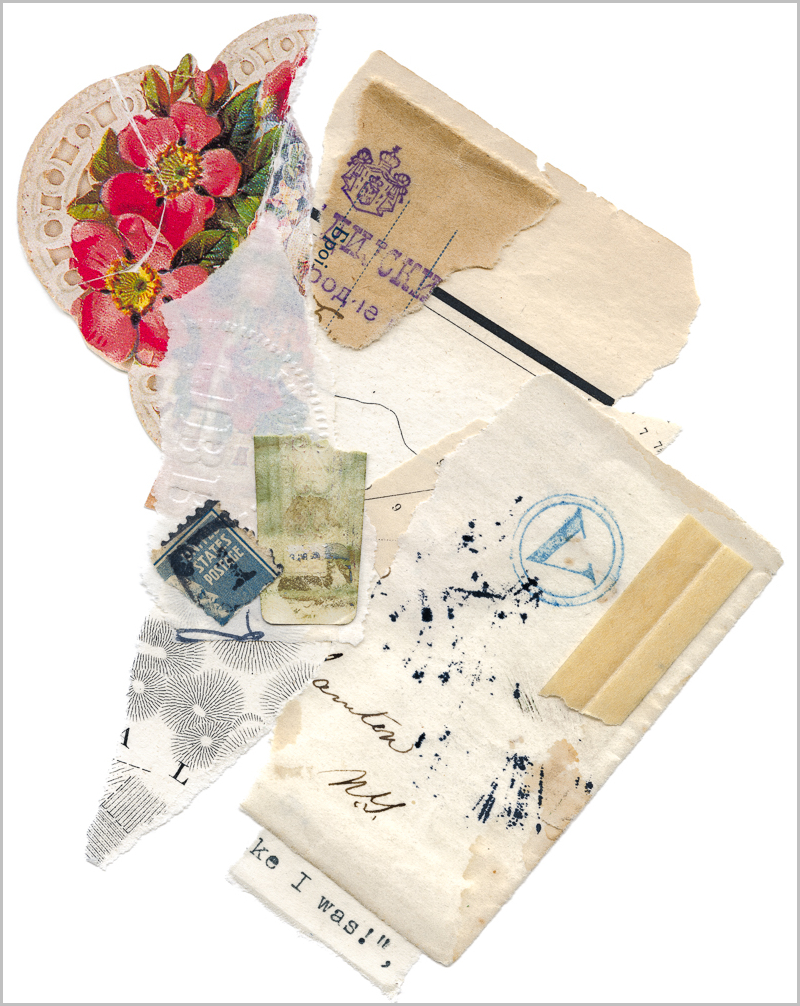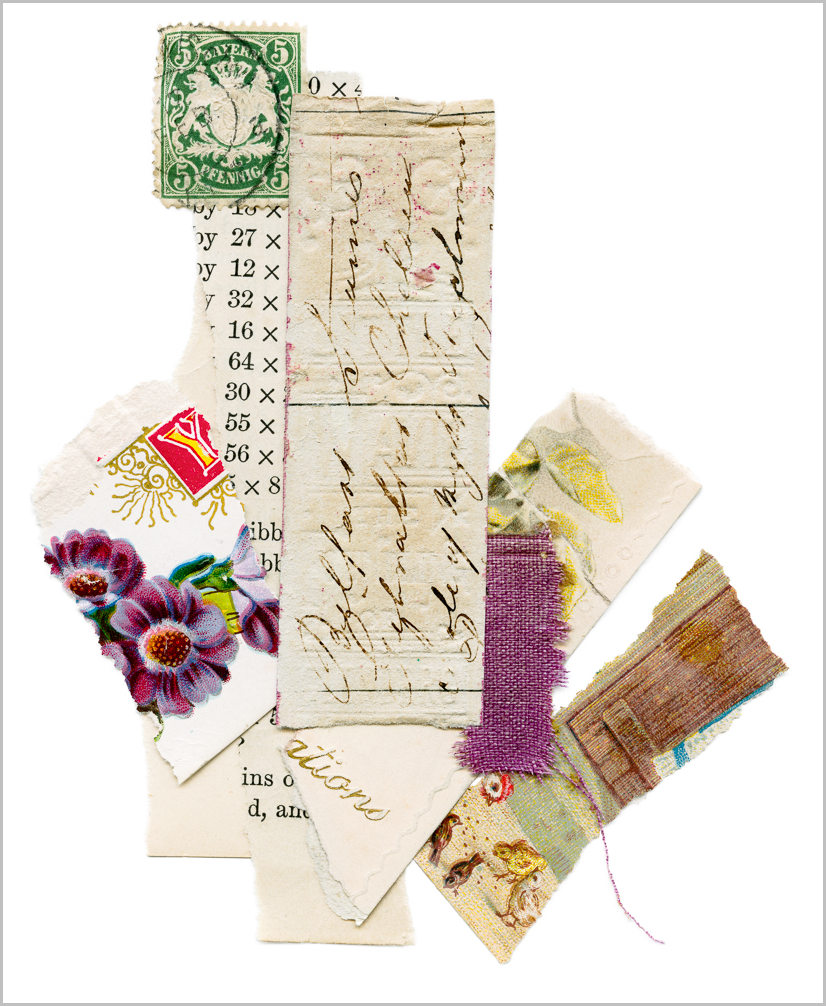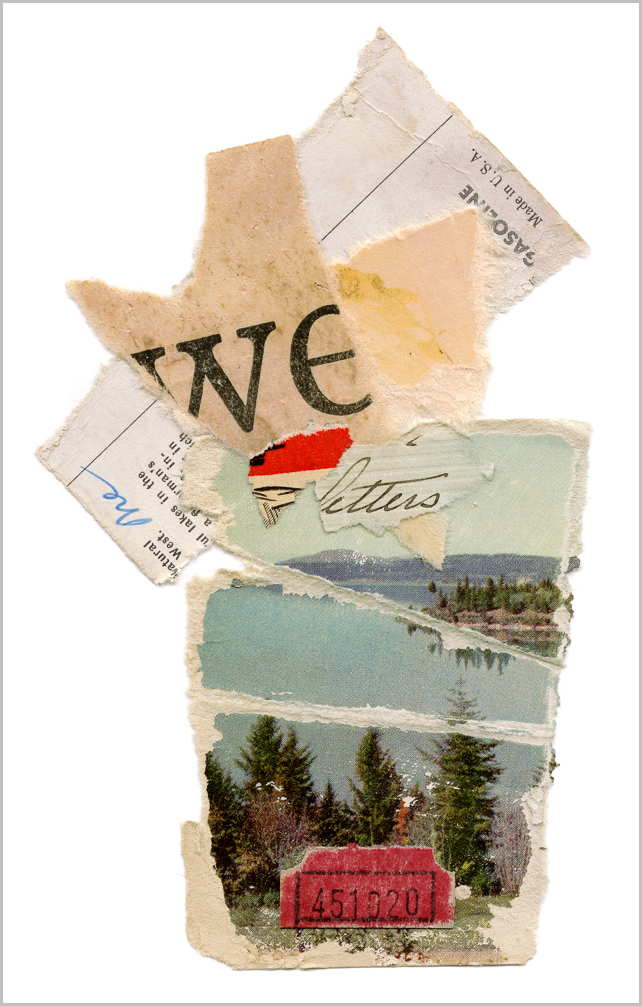The pink flowers here were originally part of a label on a bar of soap. I liked the colors, and the rounded edge. After working on this piece for a few months, I have a new reason to avoid contemporary materials. The half-tone dots, intended to invoke Victorian era printing, aren’t real, and blur at scale. The sacrifice of sharpness in that small area suits this piece with its soft, dreamy neutral palette, so I’ve added it to my portfolio. This despite the fact that sharpness of detail is the bulk of the work in these prints. The blue “V” appeared on one of the first stampless covers I found. Also included are a bit of a Commodore Perry map, a cigar paper (so far, always my Dad’s), a US Postal Stamp, and more of the same Austrian money order I used in “Poppy with Orange and Blue.”




























